We explore the Pacific Ocean, and discuss its location and extent. In addition, we describe its characteristics, ocean currents, and more.
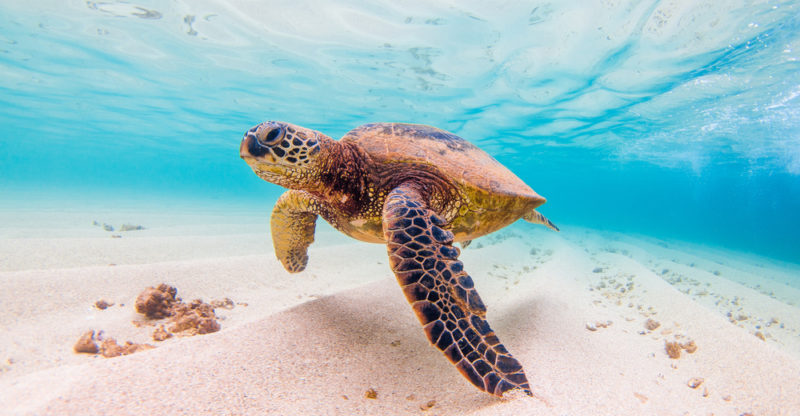
What is the Pacific Ocean?
The Pacific Ocean is the largest body of salt water on the planet. Lying between the continents of the Americas, Oceania, Asia, and Antarctica, it covers an area of over 60 million square miles (155 million km2), which accounts for 30.3% of the Earth's total area. The deepest point is located in the Mariana Trench, at about 36,000 feet (10,992 m) below sea level.
Due to its vast extent, the International Hydrographic Organization divides the Pacific Ocean into two parts: the North Pacific, stretching north of the equator, and the South Pacific, stretching south of the equator.
All the continental margins in this ocean are part of the Pacific Ring of Fire, an area of massive seismic and volcanic activity. Likewise, the Pacific Ocean is characterized by the formation of typhoons, which are highly dangerous storm systems upon reaching the coastline.
- See also: Arctic Ocean
Pacific Ocean facts
The main characteristics of the Pacific Ocean are:
- It is the largest body of salt water on the planet.
- It lies between the Americas, Asia, Oceania, and Antarctica.
- It covers an area of 60 million square miles (155 million km2).
- It is divided into the North Pacific and the South Pacific.
- It features the deepest ocean point on Earth, the Mariana Trench.
- Its waters are threatened by various types of pollution.
- Some of its islands are part of the Pacific Ring of Fire.
- It is home to the Great Barrier Reef in Oceania.
How was the Pacific Ocean formed?
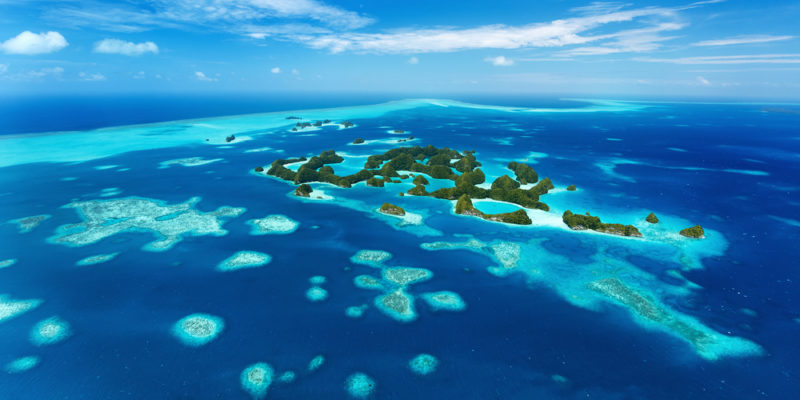
Over 200 million years ago, most of Earth's landmasses were joined together in a supercontinent called Pangea, which was surrounded by a single ocean: Panthalassa. When Pangea began to break apart, new oceans were formed, including the Atlantic and the Indian Ocean, with Panthalassa evolving into the Pacific Ocean.
The Pacific Plate was formed as a result of the fragmentation of the ancient Pacific-Panthalassic Plate. Thus, the breakup of this plate into smaller units shaped the ocean floor.
Oceanic plates like the Pacific Plate tend to sink beneath continental plates in a process called subduction. This has caused deep oceanic trenches such as the Mariana Trench to form, as well as island arcs, such as the Aleutian Islands, the islands of Japan, and the Philippines, which are known for their massive volcanic and seismic activity.
Pacific Ocean climate
Due to its vast extent, the Pacific Ocean spans a great variety of climates. In areas near the equator, the climate is warm and rainy, and the ocean waters are warmer. In tropical regions, the climate is also warm but drier. Moving away from the equator, the climate becomes colder, as do ocean waters.
Extreme weather events occur over the Pacific Ocean. In waters near Asia, especially in China, the Philippines and Japan, large tropical storms called typhoons develop.
Flora and fauna of the Pacific Ocean
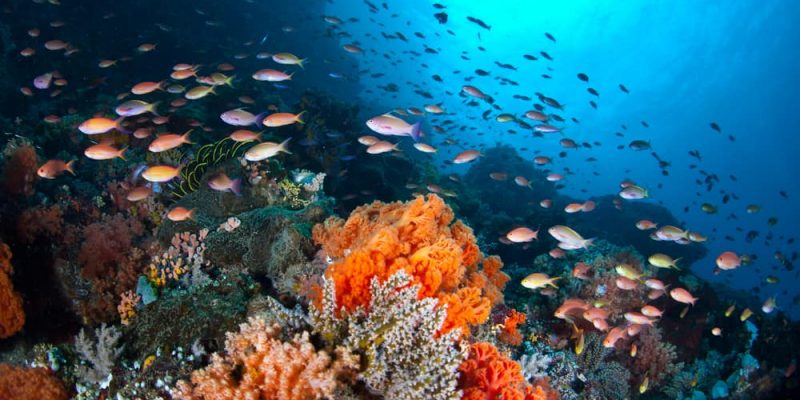
The marine flora in the Pacific Ocean is characterized by the presence of phytoplankton, which are microorganisms capable of photosynthesis constituting the base of the marine food chain.
In terms of fauna, the Pacific Ocean hosts fish of various sizes, from small tropical reef fish to large predators like sharks.
In the dark cold depths, animal life forms exist that have evolved to withstand extreme pressure, darkness, and low temperatures. Some species possess bioluminescent organs that allow them to communicate, defend against predators, and search for food in low-light areas. Others have developed smaller sizes to thrive in conditions in which food is scarce.
In turn, the waters near the poles are home to marine life adapted to the low-temperature, icy environment, featuring species such as seals, walruses, penguins, orcas, and whales.
Atlantic Ocean currents
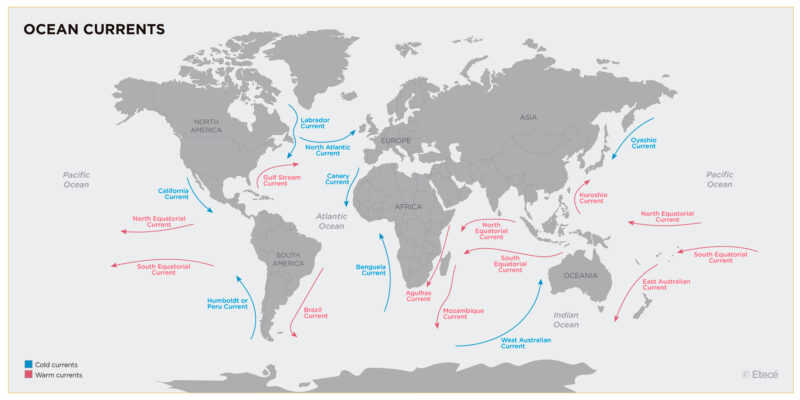
Differences in water temperature cause ocean currents to form. These are water flows that are in continuous movement within the oceans. The main ocean currents that circulate through the Pacific Ocean are:
Cold currents:
- California Current. It flows north-south along the West Coast of the United States and Mexico.
- Humboldt or Peru Current. It flows south-north along the coasts of Chile and Peru.
- Oyashio Current. It flows north-south along the eastern coasts of Russia, off the Kamchatka Peninsula.
Warm currents:
- Kuroshio Current. It flows from south to north along the coasts of the Philippines, China, and Japan.
- East Australian Current. It flows from the equator toward the tropics along the eastern coast of Australia.
- North Equatorial Current. It flows westward between latitudes 10°N and 15°N.
- South Equatorial Current. It flows westward between latitudes 10°S and 15°S.
Pacific Ocean islands
The largest islands in the Pacific Ocean are:
- New Guinea. Shared by Papua New Guinea and Indonesia, it is the second-largest island in the world. It has an area of over 303 square miles (785,000 km2).
- Honshu. The largest island in Japan, it covers an area of over 87,650 square miles (227,000 km2).
- Sulawesi. Also known as Celebes, it is part of Indonesia. It has an area of over 67,200 square miles (174,000 km2).
- South Island. The largest island of New Zealand, it covers 56,000 square miles (145,000 km2).
- North Island. Part of New Zealand, it has an area of 43,000 square miles (111,000 km2).
Pollution in the Pacific Ocean
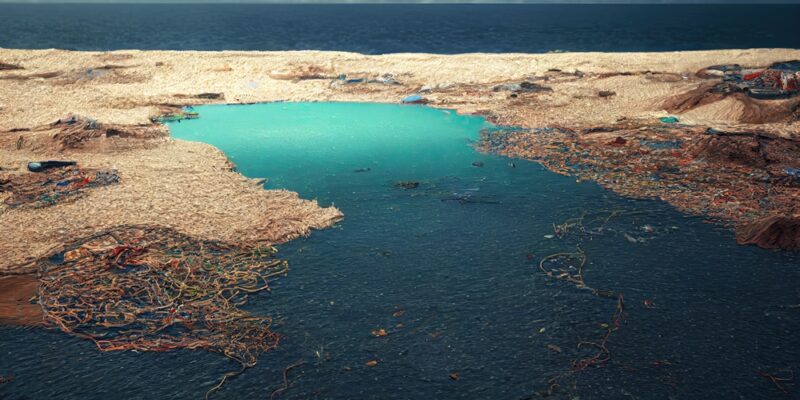
Environmental degradation in the Pacific Ocean is mainly caused by chemical and plastic pollution, as well as pollution resulting from oil extraction on offshore platforms.
Chemical pollution
Chemical pollution is caused by the discharge of toxic chemical substances such as heavy metals and industrial products. These pollutants reach the ocean through activities like agriculture, mining, and industry. Exposure to these chemicals may have serious impacts on marine life and human health.
Plastic pollution
Plastic debris, from microplastics to larger objects, continuously accumulate in the ocean causing "garbage patches" to form. Garbage patches are huge accumulations of trash floating in the water. Lying in the Pacific Ocean, the largest garbage patch on the planet is estimated to cover an area of about 618,000 square miles (1.6 million km2) and to contain more than 80,000 tons of plastic.
Oil drilling pollution
Activities related to oil extraction on the continental shelves of the Pacific Ocean are a major source of pollution. Oil spills and the release of chemicals can have detrimental effects on marine ecosystems, wildlife, and the health of coastal populations.
Mariana Trench
The Mariana Trench is the deepest part of Earth's oceans. It is located in the western Pacific Ocean, off the coasts of Papua New Guinea, Indonesia, the Philippines, China and Japan, and is the result of the subduction of the Pacific Plate beneath the Philippine Plate.
This trench extends for about 1,585 miles (2,550 km) and has a maximum known depth of approximately 36,000 (10,992 m). Its depth is greater than the height of Mount Everest, the world's highest mountain.
Despite the extreme pressure and darkness of its depths, the Mariana Trench shows a diversity of marine life adapted to the extreme conditions. Deep-sea fish species and other organisms have been discovered to have evolved adaptations to thrive in this hostile environment.
The Mariana Trench has been a focal point for scientific research due to the discovery of new species which have led to a better understanding of deep-sea geology. Manned and unmanned submarines have been used to explore its depths and collect data on its geological and biological features.
Great Barrier Reef
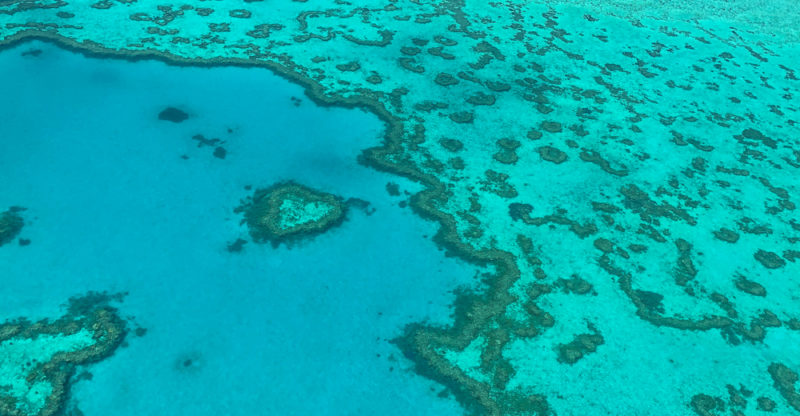
Located off the northeast coast of Australia, the Great Barrier Reef is the largest coral reef system in the world. It is situated in the Coral Sea, off the coast of Queensland. Although its exact length is difficult to determine, it is estimated to be about 1,430 miles (2,300 km) long.
Comprising over two thousand reefs and around one thousand islands, its vastness is such that it can be seen from space. It is home to an extraordinary biodiversity, including thousands of species of fish, corals, mollusks, sponges, sea turtles, and sharks.
Due to its exceptional aesthetic importance and its touristic and ecological value, the Great Barrier Reef was designated a UNESCO World Heritage Site in 1981. Despite this, it faces various threats including the rise in water temperatures caused by climate change and pollution. Conservation efforts by Australia focus on preservation, as well as on mitigating risks to the ecosystems that make up the Great Barrier Reef.
Ring of Fire

The Pacific Ring of Fire, also known as the Ring of Fire, is a region in the Pacific basin characterized by massive seismic and volcanic activity.
It is an earthquake-prone area, since plate boundaries generate constant seismic activity. Some of the largest earthquakes in history, such as the 1960 Chile earthquake and the 2011 Japan earthquake, occurred in this region.
The Ring of Fire contains a large number of active volcanoes, among which are Mount St. Helens in the United States, Mount Fuji in Japan, Cotopaxi Volcano in Ecuador, and Puyehue Volcano in Chile.
Explore next:
References
- GeoEnciclopedia. (2022). Océano Pacífico. https://www.geoenciclopedia.com/
- Iberdrola. (s.f.). Descubre las islas de plástico que contaminan nuestros océanos. https://www.iberdrola.com/
- National Geographic. (2010). Océanos. https://www.nationalgeographic.es/
- Portillo, G. (2023). Qué son y cómo se forman las corrientes marinas. Meteorología en Red. https://www.meteorologiaenred.com/
- Saber Es Práctico. (2022). Países bañados por el océano Pacífico. https://www.saberespractico.com/
Was this information useful to you?
Yes NoThank you for visiting us :)